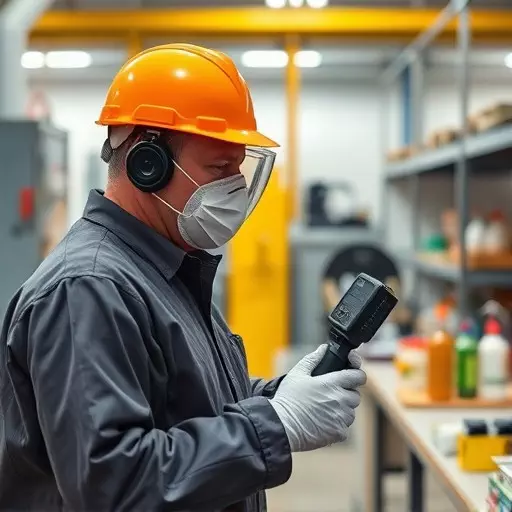Employee exposure monitoring is vital for managing hazardous substances in the workplace by assessing workers' potential contact with harmful chemicals over time. Workplace air quality testing, a key component of this process, analyzes air samples for volatile organic compounds (VOCs) and other contaminants using advanced technologies like real-time monitoring systems. Regular testing establishes baselines, guides risk mitigation strategies, and enhances workplace safety while ensuring compliance with occupational safety regulations, ultimately promoting a culture of wellness.
In today’s industrial landscape, hazardous substance monitoring is paramount for ensuring worker safety and compliance with regulations. This comprehensive guide delves into crucial aspects of employee exposure monitoring and workplace air quality testing—essential tools in managing risks associated with harmful substances. By understanding the basics and importance of these processes, businesses can implement effective strategies to foster a safe work environment. Explore proven methods and learn how air quality testing impacts hazardous substance management for optimal results.
- Understanding Employee Exposure Monitoring: The Basics and Importance
- Workplace Air Quality Testing: Methods and Impact on Hazardous Substance Management
- Implementing Effective Hazardous Substance Monitoring Strategies for a Safe Work Environment
Understanding Employee Exposure Monitoring: The Basics and Importance
Employee Exposure Monitoring is a critical component of hazardous substance monitoring in the workplace. It involves assessing and measuring employees’ potential exposure to harmful chemicals or substances over time. This process is crucial for ensuring workplace air quality testing, as it helps identify risks and allows employers to take proactive measures to protect their workforce. By understanding employee exposure, companies can implement effective safety protocols and control strategies to minimize or eliminate hazards.
The basics of employee exposure monitoring include conducting regular tests and surveys to gather data on the presence and levels of hazardous substances in the air. This may involve taking samples from various locations within the workplace, including areas where employees spend significant time. The collected data is then analyzed to determine exposure levels and assess any potential health risks. The importance of this practice lies not only in complying with regulatory standards but also in fostering a culture of safety and health within the organization.
Workplace Air Quality Testing: Methods and Impact on Hazardous Substance Management
Workplace Air Quality Testing plays a pivotal role in Hazardous Substance Monitoring by providing critical insights into employee exposure levels. This process involves collecting and analyzing air samples to detect the presence and concentration of volatile organic compounds (VOCs), particulate matter, and other airborne contaminants that may pose health risks. Advanced methods like real-time monitoring systems and portable instruments enable continuous assessment, allowing employers to quickly identify sources of contamination and take corrective actions.
The impact on Hazardous Substance Management is profound. Regular workplace air quality testing helps in establishing baseline data for comparison, facilitating the implementation of effective control measures. By identifying high exposure areas or specific substances exceeding safety thresholds, employers can prioritize risk mitigation strategies, such as improving ventilation systems, implementing engineering controls, and providing personal protective equipment (PPE). This proactive approach to employee exposure monitoring not only enhances overall workplace safety but also reduces the likelihood of costly incidents and legal repercussions related to hazardous substance management.
Implementing Effective Hazardous Substance Monitoring Strategies for a Safe Work Environment
Implementing effective hazardous substance monitoring strategies is paramount for fostering a safe work environment and safeguarding employee health. Employee exposure monitoring plays a pivotal role in identifying potential risks associated with various hazardous substances present in the workplace, be it toxic chemicals, volatile organic compounds (VOCs), or other noxious gases. Regular and comprehensive monitoring ensures that air quality standards are maintained, minimizing the risk of respiratory issues, chronic diseases, and other health complications among workers.
Workplace air quality testing is an integral component of these strategies. By collecting data on airborne contaminants, organizations can pinpoint sources of pollution, assess exposure levels, and implement targeted interventions. This proactive approach enables businesses to comply with occupational safety regulations, enhance environmental stewardship, and ultimately promote a culture of wellness within the workplace.


